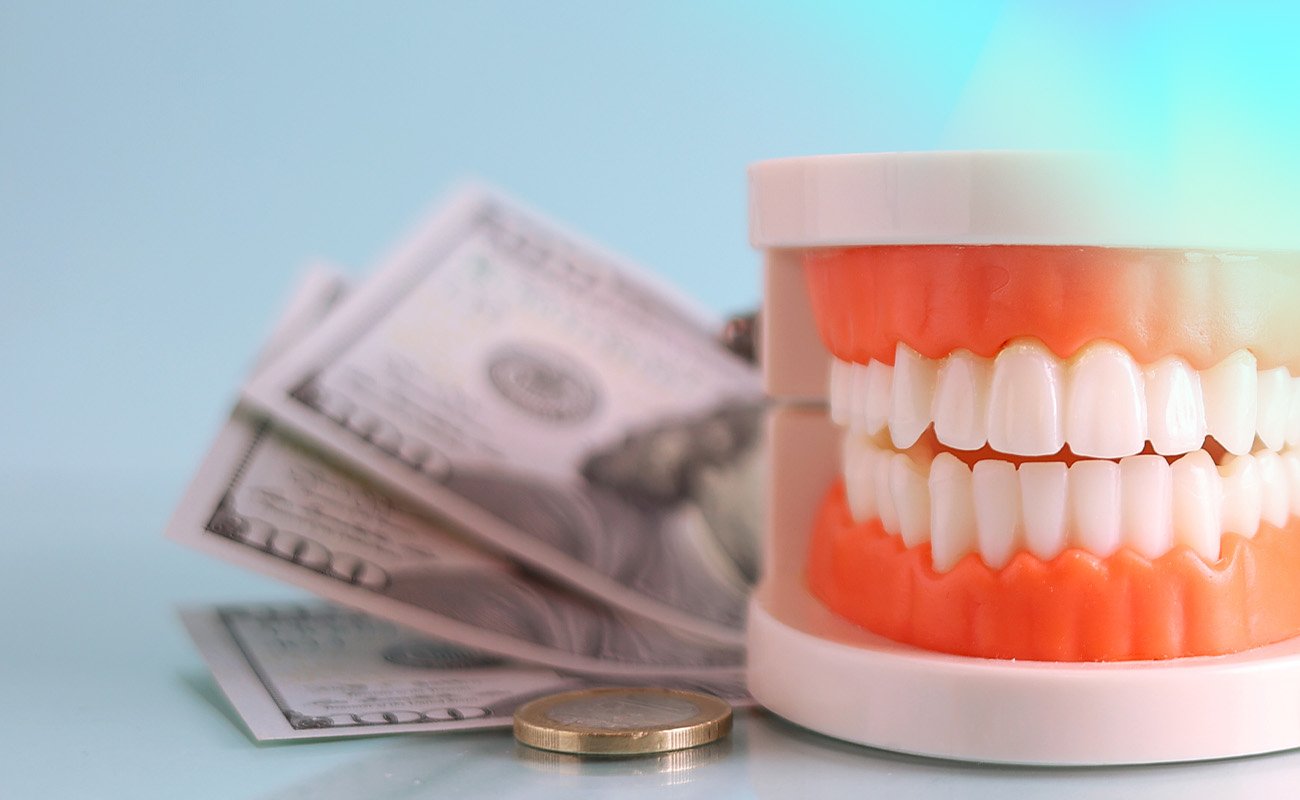Braces help correct misaligned teeth and bite issues to improve oral health and appearance. However, the high costs associated with braces can be a significant concern for many people seeking treatment.
The expense of braces arises from various factors, including the type of braces used, the complexity of the case, and the duration of treatment. Despite the high price tag, braces continue to be a popular choice for correcting dental issues due to their effectiveness and long-term benefits.
In this article, we will provide a brief overview of braces and discuss the reasons behind their high costs. We will also overview other orthodontic treatments, such as clear aligners and Invisalign.
Factors Affecting the Cost of Braces
The cost of orthodontic appliances is affected by various factors, including the materials utilized, operational expenses of orthodontic clinics, training costs for specialists, and the duration of the braces treatment.
See also: Can I Switch from Braces to Invisalign Mid Treatment?
Components of Braces
The cost of braces is affected by the materials and components used, the level of customization, and the technology employed. Whether using metal brackets, ceramic options, advanced wires, or incorporating innovative technology for a tailored fit, each choice affects the price.
Materials Used
Braces are made of high-quality, sturdy materials that contribute to their cost. They often consist of stainless steel, titanium, or ceramic, each having specific advantages and disadvantages. The materials and supplies needed for braces, along with their manufacturing process, increase the overall expense.
Customization
Every patient has unique orthodontic needs. Customization is necessary to ensure optimal results, which in turn, adds to the braces’ cost. The process of manufacturing and installing braces varies depending on the individual’s teeth alignment issues, their severity, and their age. Custom brackets, archwires, and other components are designed to fit each person’s mouth perfectly and require extensive planning and preparation.
See also: Why Do Braces Take So Long?
Used Technologies
Orthodontic treatment benefits from advancements in technology, but incorporating these innovations also influences the cost. Digital imaging, 3D treatment planning, and new techniques in orthodontics allow for more comfortable and efficient treatment. However, these technological advancements require additional training for providers and investment in equipment, contributing to the overall cost of braces.
Worth Knowing
A study featured in the European Journal of Paediatric Dentistry finds that around the world, 56% of people experience malocclusion, with this condition affecting both genders equally.
Specialized Skills and Training
The expertise of orthodontists directly affects the pricing of braces. The extended education and training required for orthodontists are factors that contribute to the cost.
Education of Orthodontists
Orthodontists undergo extensive education that starts with a four-year bachelor’s degree, followed by an additional four years of dental school. After completing dental school, they pursue a two to three-year orthodontic residency program. This rigorous education process contributes to the high cost of braces.
Continuous Professional Development
Continuing professional development is important for orthodontists to stay current with advancements in technology, materials, and treatment techniques. This requires attending conferences, workshops, and courses, which come at a cost.
Operational Costs of Orthodontic Clinics
Operational expenses contribute to the total cost of braces. The costs of maintaining an orthodontic clinic, staffing, and utilities, can differ and impact treatment prices. This section examines how these operational costs affect the price of braces.
Facility Maintenance
Orthodontic clinics have to bear various running costs, including rent and utilities. The facility’s upkeep, such as cleaning and repairs, adds to these expenses. Regular maintenance ensures a hygienic and comfortable environment for patients, which is important for successful treatment.
Equipment and Technology Maintenance
Orthodontic treatments involve the use of advanced equipment and technology, which come at a high cost. Besides the initial investment, clinics must allocate funds for periodic maintenance, repairs, and eventual replacement of these tools.
Staffing and Professional Development
Another major cost incurred by orthodontic clinics is staffing. This includes salaries, benefits, and ongoing training for the orthodontist and their support staff. Professional development ensures that the team stays current with industry advancements, allowing them to provide the best possible care to their patients.
See also: Can You Put Braces on Veneers?
Time Involved in the Treatment
The duration of braces treatment directly impacts its cost. The more severe the malocclusion or misalignment, the longer the treatment is required, leading to an increase in overall expenses. Let’s see what are the stages of treatment.
Initial Consultation
The initial consultation is a critical step in determining the need for braces and the type of treatment required. During this appointment, the orthodontist evaluates the patient’s teeth, jaw, and overall oral health. They may take X-rays, photographs, and dental impressions to create a customized treatment plan. The time and expertise required during this phase contribute to the overall cost of braces.
Regular Adjustments
Once braces are applied, regular follow-up appointments are necessary to monitor progress and make adjustments. The orthodontist’s time and expertise throughout the treatment, including regular check-ups, contribute to the high cost of braces. These adjustments also ensure proper tooth alignment and prevent complications, further justifying the expenses.
Post-Treatment Care
After the braces are removed, post-treatment care is necessary to maintain the newly corrected teeth alignment. This care may include a set of retainers, follow-up appointments, or additional orthodontic procedures when needed. Although not part of the primary treatment phase, these additional costs can make braces more expensive, as they help ensure long-lasting results.

Average Cost of Braces and Their Alternatives
Metal Braces
Metal braces are the most traditional type of braces and typically cost between $3,000 to $7,000. These braces use metal brackets and wires to apply pressure and gradually shift teeth into the desired position. The cost does not include adjustments, follow-up appointments, and retainers once the treatment is complete.
Ceramic Braces
Ceramic braces are a more discreet option than metal braces, with clear or tooth-colored brackets. The average cost is slightly higher, ranging from $4,000 to $8,000. These braces function similarly to metal braces, but their less noticeable appearance is often preferred by patients looking for a less obvious orthodontic treatment.
Lingual Braces
Lingual braces are placed behind the teeth, making them virtually invisible. However, this option is more expensive, with costs ranging between $8,000 to $10,000. They offer the same effectiveness as other braces types but may take longer to adjust to and can be more challenging to clean due to their location.
Invisalign
Invisalign uses a series of custom-made, clear aligners that are changed every few weeks to gradually straighten teeth. The average cost ranges from $3,000 to $8,000, depending on the complexity of the treatment. While Invisalign offers the benefit of being nearly invisible and allowing patients to eat and drink without restrictions, it may not be ideal for severe cases or patients with compliance concerns.
See also: How Long Does Invisalign Take If You Already Had Braces?
Clear Aligners
Clear aligners, like Byte, provide an alternative for teeth straightening. With prices beginning at around $1000, they can be a cost-effective and convenient solution for individuals with mild to moderate orthodontic issues.
Here are the leading invisible aligner brands and their features:
AlignerCo is a well-known brand that provides an affordable aligner program. Their prices are lower than most other aligner brands, with treatment starting at just $945, which also includes free retainers and a teeth whitening kit.

AlignerCo
The cheapest at-home aligners, with monthly plans, no down payment, and considerable discounts.
Check out AlignerCo AlignersNewSmile is one of the newest aligner brands on the market and is known for its affordability. When you purchase their aligners, you receive an impression kit, whitening foam, aligners, and retainers. This brand also provides monthly payment plans without requiring any initial payments, offers a video call option with a specialist to assist with mouth impressions, and has a user-friendly online assessment process.

NewSmile
Affordable at-home treatment with positive reviews offering superior look and comfort.
Check out NewSmile AlignersByte is a well-known brand that offers a lifetime guarantee for your aligners. This means that if your teeth don’t stay in the desired treatment position afterward, you’ll receive additional impression kits, treatment plans, and sets of aligners at no additional cost to correct any misalignments.

Byte
An affordable option with refundable impression kits, free HyperByte, and a Byte for Life guarantee.
Check out Byte AlignersCandid is a highly regarded aligner product with a treatment approach similar to Invisalign. Unlike the other brands mentioned, Candid doesn’t offer a direct-to-home ordering service. Instead, a qualified orthodontist will assess your eligibility for treatment. The advantage is that you won’t need regular appointments after starting treatment. Candid aligners are suitable for addressing both mild and severe spacing issues.

Candid
A hybrid of in-office and at-home treatment that provides 1-on-1 orthodontist support.
Check out Candid AlignersGeographical Variation in Costs
The cost of braces can vary significantly depending on geographical location. Factors such as the local cost of living, the demand for orthodontic services, and regional competition among providers can influence the price. For instance, braces in states like Oklahoma or Alabama, with a generally lower cost of living, might be more affordable than in urban hubs like Los Angeles. Additionally, certain countries or regions might offer similar services at a reduced cost due to differences in educational expenses, operational overheads, and regulatory factors.
Insurance and Financing Options
Several options exist to help patients manage the costs of orthodontic treatment. In this section, we briefly discuss insurance coverage for braces, as well as available payment plans and financing solutions.
Many dental insurance plans offer some level of coverage for orthodontic treatments, such as braces. However, coverage, limitations, and exclusions may vary depending on the specific policy. Some plans may have an age limit or only cover a percentage of the treatment costs, while others may cover a specific dollar amount toward braces.
For individuals without access to insurer financing, orthodontists often have a range of payment plans and financing options. Payment plans usually divide the total cost of braces into monthly installments. Financing can come from third-party lenders or be offered directly by the orthodontic practice.
Frequently Asked Questions
Why do orthodontic treatments cost so much?
Orthodontic treatments, such as braces, can be expensive due to several factors, including the need for specialized training, materials used in the treatment, and the duration of the treatment plan. In some cases, the complexity of the orthodontic issue being addressed can also contribute to the higher cost.
What factors contribute to the high cost of braces?
The cost of braces varies depending on factors like type of braces, length of treatment, location, and the orthodontist’s level of expertise. Some braces require more customization and complex adjustments, which can increase the cost.
Are there alternatives to traditional braces that are more affordable?
Yes, there are alternatives to traditional braces, such as clear aligners, which can be more affordable. However, not all orthodontic issues can be treated with these alternatives, and their effectiveness for each case will depend on the individual’s specific needs.
How can dental insurance impact the price of braces?
Dental insurance can significantly impact the price of braces by covering a portion of the cost of orthodontic treatment. Insurance coverage varies, so it’s important to check with your provider to understand your specific benefits and how they apply to braces.
Do different types of braces have varying costs?
Yes, different types of braces have varying costs. Traditional metal braces are usually the least expensive option, while clear or ceramic braces, lingual braces, and Invisalign may cost more due to the materials used and the complexity of their design and adjustments.
Is the expense of braces justified by their benefits?
The expense of braces can be justified by the long-term benefits they provide, such as improved oral health, better bite alignment, and enhanced appearance. Properly aligned teeth can reduce the risk of dental issues, boost self-confidence, and lead to a healthier, happier smile.
Sources
G Lombardo, F Vena, P Negri, S Pagano, C Barilotti, L Paglia, S Colombo, M Orso, S Cianetti, Worldwide prevalence of malocclusion in the different stages of dentition: A systematic review and meta-analysis; Eur J Paediatr Dent. 2020 Jun;21(2):115-122. doi: 10.23804/ejpd.2020.21.02.05. Available online at: https://pubmed.ncbi.nlm.nih.gov/32567942/
Alajmi S., Shaban A, Al-Azemi R. Comparison of short-term oral impacts experienced by patients treated with Invisalign or conventional fixed orthodontic appliances. Medical Principles and Practice. 2019. Available online at: https://pubmed.ncbi.nlm.nih.gov/31842018/
Buschang, P.H., Shaw S.G., Ross M., Crosby D., Campbell P.M., Comparative time efficiency of aligner therapy and conventional edgewise braces. Angle Orthod (2014). DOI: 10.2319/062113-466. Available online at: https://meridian.allenpress.com/angle-orthodontist/article/84/3/391/58505/

